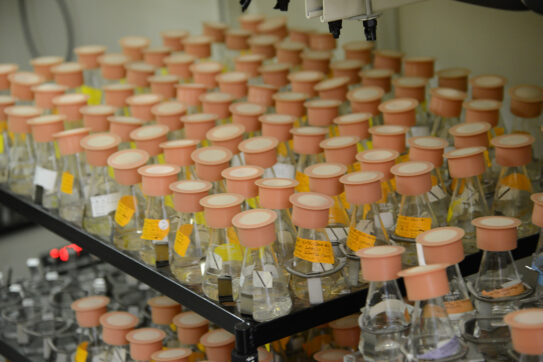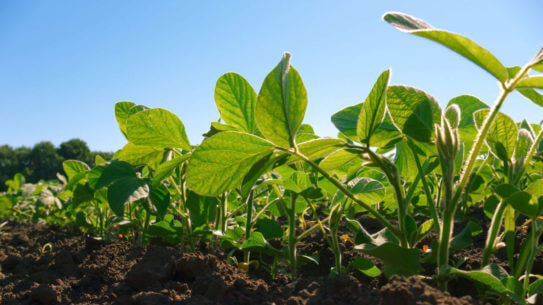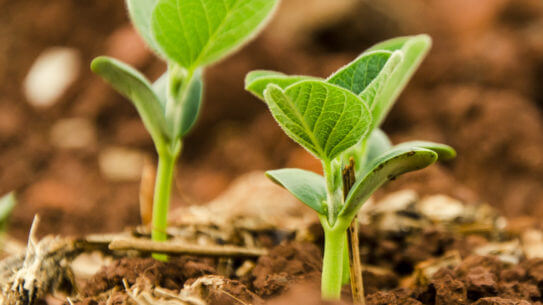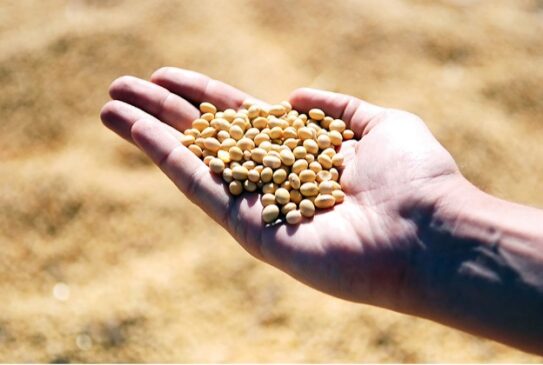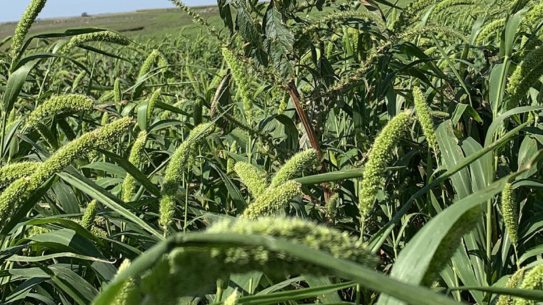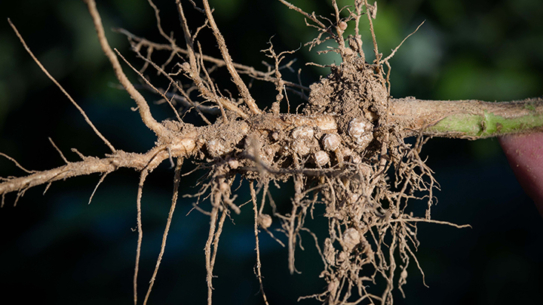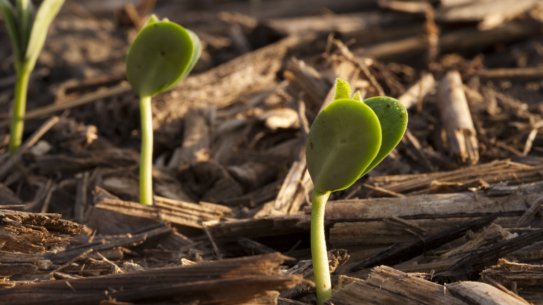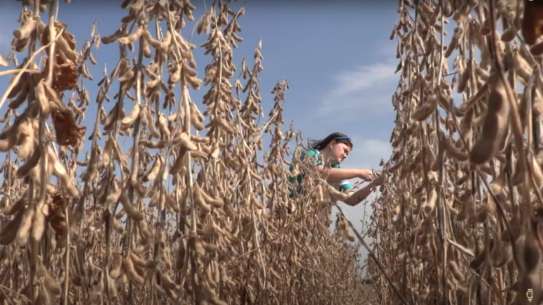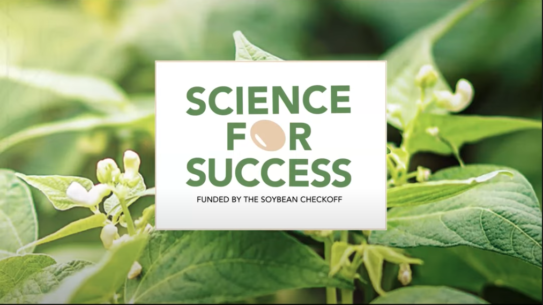Farmer Q&A Videos
Review previous #SoySnippets Q&A topic videos or catch up on a topic that you may have missed.
Insect Management
Insect pests feed on soybeans at all growth stages, from germination through pod fill, decreasing crop quality and stealing yield. Integrated pest management, or IPM, strategies allow farmers to cost-effectively manage insect pressure using a variety of tools, including cultural practices, genetics and biotechnology, scouting and chemical controls. Many checkoff-funded tools, resources and research projects help soybean farmers efficiently control insects and protect soybean yield and quality.
Water Management
Water Management
Water availability can be a limiting resource for soybean growth at critical points in the growing season. Or water can be overly abundant or poorly timed thanks to heavy rains and weather patterns. Water management accounts for both efficient use of irrigation and allowing excess water to drain while protecting water quality as it moves into the watershed. A wide variety of checkoff-funded tools, resources and research projects help soybean farmers maximize the value of the water they have access to and preserve water quality as it leaves their fields.
Cover Crops
The concept of “soil health” has gained traction in recent years. Soil health, also sometimes referred to as soil quality, is defined as the continued capacity of soil to function as a vital living ecosystem that sustains plants, animals, and humans. The definition speaks to the importance of managing soils so they are sustainable for future generations. Cover crops are an important component of soil health. Producers are giving cover crops a fresh look as part of modern sustainable agricultural systems. Keep in mind that cover crops provide several benefits for the soil, crops and the environment. They are not planted for harvest value. Some cover crops are suitable for grazing or haying, but if you plant them for such purposes, then they are forage crops and should be managed as such.
More Videos On YouTube
To find even more videos like this on a variety of topics related to soybean research, please visit our YouTube Channel.



